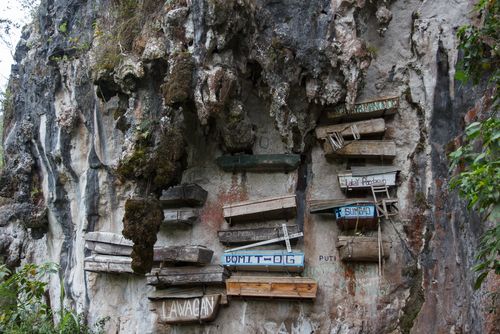 Saying goodbye to a loved one is never easy. Many people in the US only know of two ways to do so: cremation or embalming and burial. However, there are many different funeral customs around the world. Here are just a few of them.
Saying goodbye to a loved one is never easy. Many people in the US only know of two ways to do so: cremation or embalming and burial. However, there are many different funeral customs around the world. Here are just a few of them.
South Korean Burial Beads
Because South Korea is a small, heavily populated country, graveyard space is at a premium. A law went into effect in 2000 that made it mandatory for families to remove their loved ones’ remains from graveyards after 60 years. Now, twice as many families are opting for cremation than prior to the law’s passing.
Many South Koreans see keeping their loved ones’ ashes in an urn or scattering the ashes as inadequately respectful to the deceased. Companies have popped up offering to turn the ashes into colorful beads, usually pink, blue-green, or black. Families display the beads in clear glass jars or in bowls.
Burial Reefs
One of the greenest ways to memorialize your loved one is to have their ashes turned into part of a memorial reef. One example is Neptune Memorial Reef, off the coast of Miami in international waters. With packages starting at $7,995, you can choose the form of your loved one’s remains when they’re mixed with concrete to become part of the reef.
Another example is Eternal Reefs, part of the Reef Balls family. Reef balls are used for multiple purposes, from building coral reefs to creating oyster beds, growing mangroves, and helping stop the inexorable process of beach erosion.
Funeral Totem Poles
The Haida tribe of the Pacific Northwest buried most of its people in large burial pits rather than individual burial rites. However, for shamans, chiefs, and warriors, mortuary totem poles were created from cedar trees.
Each totem pole had a cavity in the top for a burial box. Since the bodies were obviously too large for the boxes, the Haida would beat the dead bodies until they could fit. The boxes were hidden from sight by the family crest atop the totem poles. Other carvings represented people, clan crests, and animals, painted in red, black, blue, yellow, and white.
Skull Exhumation
In Kiribati, an island nation in the South Pacific, the dead are displayed in the home for up to 12 days, depending on their social status. Then they’re buried. After a few months, the body will be exhumed and the skull removed from the skeleton.
The skull is then taken back home, cleaned, polished, and oiled, before being put on display in the house. Sometimes the family makes offerings of tobacco or food to the skull.
Blindfolding the Deceased
In Benguet, on the top of Luzon, an island in the Philippines, the families who have lost loved ones display the deceased in chairs next to the front door for eight days. They light a fire to deter insects, and so that if the decedent’s soul gets lost, it can find its way home again. They put blindfolds on their loved ones so they can’t see all the suffering going on around them.
Hanging Coffins
Elsewhere in the Philippines, the Sagada people have a tradition of hanging their coffins from the nearby cliffs. The coffins are typically carved out of logs by the elderly people who are going to need them. In case they’re unable to carry out the task themselves, their family will carve the log coffin for them. They practice coffin-hanging to bring the deceased closer to heaven.
While burial customs differ from culture to culture, there’s one common thread that runs through them: honoring those who have passed away. Whether that’s through carving a totem pole or turning the cremated remains into beads, the dead are kept alive in the hearts of those who loved them.